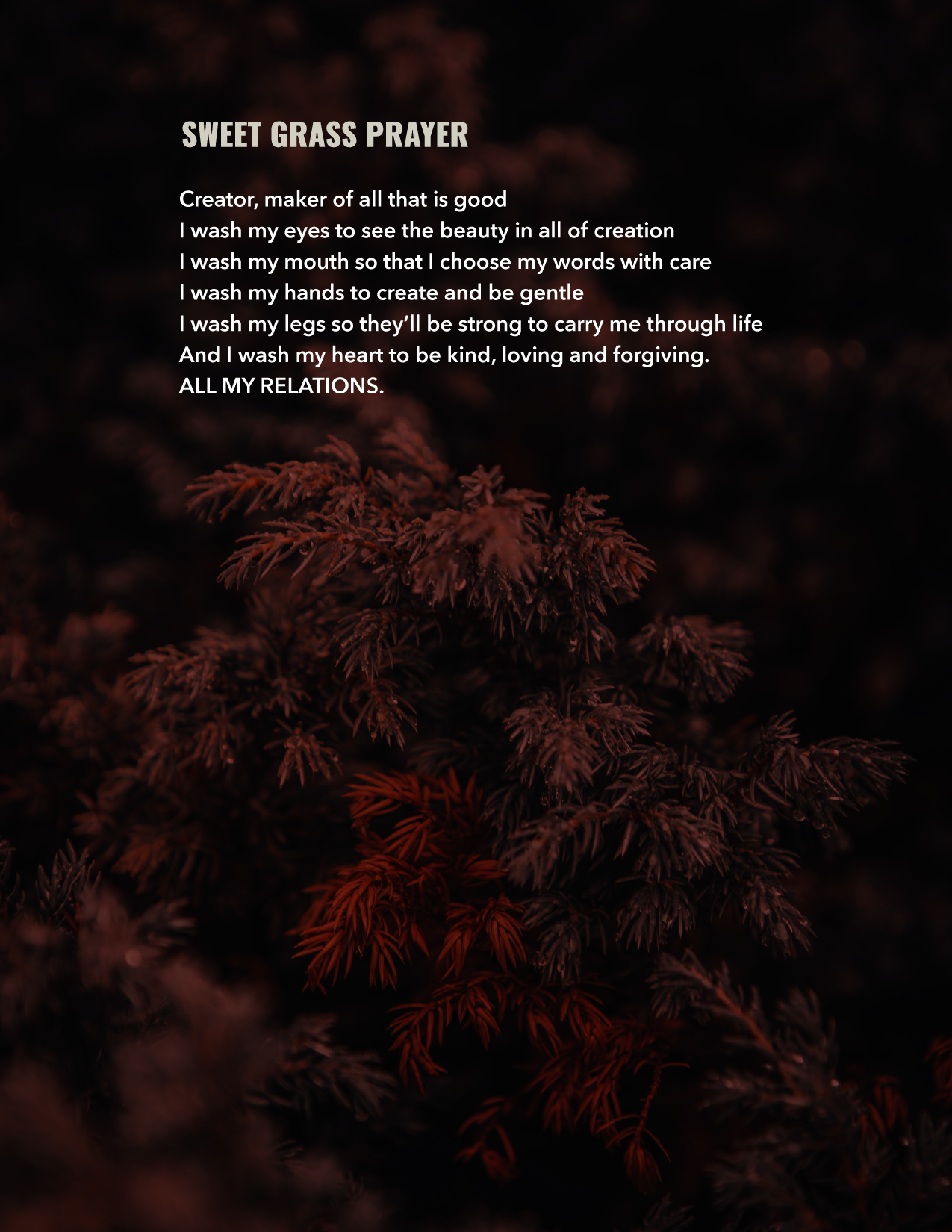
OUR APPROACH
INDIGENOUS CUSTOMS
Many people of Indigenous descent know relatively little about their culture, as much knowledge was lost because of former provincial laws. However, there is a lot of effort being made to relearn native dances, ceremonies, languages, etc. Because of the loss of some West Coast traditions and because of the variety of Indian groups represented in Vancouver, some plains ways have been adopted here, but there still exist very distinctive traits of each tribe and area, particularly noticeable in their art and handicrafts.
Smudging is a general practice when working with the Medicine Wheel. A Smudge is often made from cedar, sage, sweet grass or a combination and used to create a place to heal the inner self.
Smudging is done by lighting and fanning the dried mixture with a feather and then using your hands to draw the smoke over your body into your heart and through your mind and body.
Prayer is an expression of gratitude for the gifts of mind, body and spirit we have been given by the Creator.
Answers are found in our values, attitudes and beliefs which play a major role in our lives. By changing our values, attitudes, and beliefs we are able to change
our environment.
SAGE CEREMONY
As we need to wash our bodies, Indigenous Peoples believe we also need to wash our Spirit. They take the dried herb, sage and place it in a bowl or an abalone shell and light it. Sage burns like incense and gives off a sweet aroma. Near the coast, sage is commonly used. But in the woods, fungus from a tree is used, and on plains, sweet-grass is employed. These things are like holy water; they are sacred and believed to possess powers.
Only stick or paper matches are used to light the sage, and it is fanned with an eagle feather. The eagle feather itself is first cleaned by passing it through the smoke toward the four directions. Which Indigenous Peoples refer to as their Grandfathers, and to Mother Earth and Father Sky.
As the smoke rises, it is taken in the hands, and the participants:
bring it to their heads to first cleanse their minds. They pray that they will have only good thoughts.
Next they sage their eyes; first they give thanks for them and then pray that they will see only good in people.
Next the ears are saged and prayers are said for an open mind, but with the ability to retain only what is good; for example: not listening to gossip. When the mouth is saged. Thanks are said for the ability to communicate.
Prayers are said for the shoulders and back so that they will be strong enough for the everyday burdens of life.
The arms and hands, and also the legs and feet are saged, and prayers said that they will be used only for what they are intended, and that they will be creative and constructive.
Finally, they give thanks for their hearts and pray that they will be loving and soft and that they will have enough love for others.
At the end of the ceremony, a person gives thanks for “All My Relations”. Meaning everything they may have missed. This signifies that everything is interrelated, such as in the life cycles of nature. Indigenous Peoples have always been close to the earth and aware of the relationships between its different parts.
This ceremony can be performed at any time by any one person, or in a group. In a group setting, someone usually cleanses his or her hands and then takes the sage and prays over it to bless it before everyone begins to use it.
Sage helps their prayers to be heard, though not necessarily answered. It is believed that as fast as the smoke rises from the fire, so fast are the prayers being heard.






